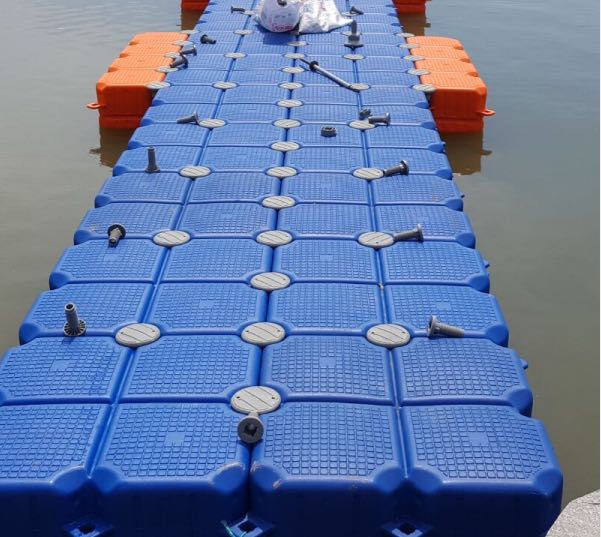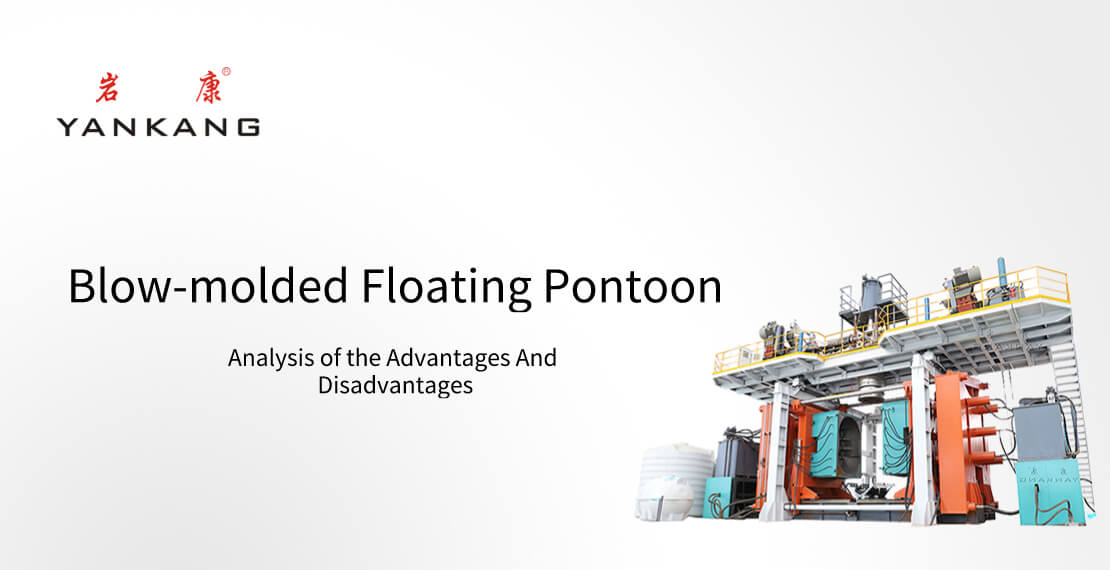The blow-molded floating pontoon is made of ultra-high-density polyethylene resin as raw material and produced by a blow molding process. Today, let’s talk about the advantages and disadvantages of a blow-molded floating pontoon.
 A blow-molded floating pontoon has the characteristics of lightweight, high buoyancy, strong resistance, strong impact resistance, long service life, and strong durability. The floating bridge has no gaps, no water seepage, one-time forming, anti-freezing, anti-ultraviolet, alkali resistance, environmental protection, and pollution-free. Quick installation, flexible assembly, anti-skid technology on the pontoon deck, safety, and stability. With high bearing capacity and stability, except for strong natural force and artificial improper use, almost no maintenance and repair costs are required. Easy to assemble, fast and flexible, and diversified in shape. The overall modular structure can meet the needs of various shapes and freely change the shape of the platform; the appearance is bright in color. The blow-molded floating pontoon can also add related supporting equipment, such as mooring bolts, bollards, bumping balls, guardrails, landing gangways, etc., that is, mooring various small boats; and due to the buoyancy nature of the floating bridge platform, it can follow the water level. It rises and falls automatically, and passengers get on and off the boat comfortably and enjoy the five-star VIP reception.
A blow-molded floating pontoon has the characteristics of lightweight, high buoyancy, strong resistance, strong impact resistance, long service life, and strong durability. The floating bridge has no gaps, no water seepage, one-time forming, anti-freezing, anti-ultraviolet, alkali resistance, environmental protection, and pollution-free. Quick installation, flexible assembly, anti-skid technology on the pontoon deck, safety, and stability. With high bearing capacity and stability, except for strong natural force and artificial improper use, almost no maintenance and repair costs are required. Easy to assemble, fast and flexible, and diversified in shape. The overall modular structure can meet the needs of various shapes and freely change the shape of the platform; the appearance is bright in color. The blow-molded floating pontoon can also add related supporting equipment, such as mooring bolts, bollards, bumping balls, guardrails, landing gangways, etc., that is, mooring various small boats; and due to the buoyancy nature of the floating bridge platform, it can follow the water level. It rises and falls automatically, and passengers get on and off the boat comfortably and enjoy the five-star VIP reception.
A variety of different water platforms can be formed according to random connections, which play different roles, and are widely used in water platform construction. The load-bearing capacity of a single floating bridge can be as high as 350kg, and the platform can be built for people or vehicles to pass stably. It can be freely combined into various shapes according to needs, and it is easy to install and disassemble, and it is safe to transport and carry. The service life can be as high as 15 years, and it does not require any maintenance during operation. It is usually resistant to acid and alkali corrosion and sunlight, not easy to produce harmful substances, and is green and environmentally friendly. Electricity, water, and gas pipelines can be deployed on the platform of the floating float structure without affecting the application and appearance. The surface layer has a non-slip design and a variety of colors to choose from, which are both easy to use and beautiful.
In summary, a blow-molded floating pontoon has the following advantages:
1. High efficiency. The most obvious difference between using blow-molded floating pontoon to build yacht piers is that the construction time is short and the efficiency is high.
2. The shape is changeable. An ideal marina can be built according to the required graphics, and a marina with a variety of shapes is more suitable for docking yachts.
3. Low cost and good wear resistance. Save land, the cost is relatively low, and it is convenient to deposit and withdraw goods. 4. High impact resistance, especially durable under low-temperature conditions, and high safety.
5. Easy to set up and disassemble, and strong carrying capacity.
6. Lightweight, smooth and beautiful, resistant to corrosion and washing, no water and no mold.
The blow-molded floating pontoon has the following shortcomings: daily maintenance tasks are heavy, and attention should be paid to moisture and flood prevention.
The above content is the analysis of the advantages and disadvantages of a blow-molded floating pontoon.

